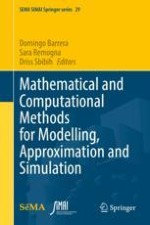This book contains plenary lectures given at the International Conference on Mathematical and Computational Modeling, Approximation and Simulation, dealing with three very different problems: reduction of Runge and Gibbs phenomena, difficulties arising when studying models that depend on the highly nonlinear behaviour of a system of PDEs, and data fitting with truncated hierarchical B-splines for the adaptive reconstruction of industrial models. The book includes nine contributions, mostly related to quasi-interpolation. This is a topic that continues to register a high level of interest, both for those working in the field of approximation theory and for those interested in its use in a practical context. Two chapters address the construction of quasi-interpolants, and three others focus on the use of quasi-interpolation in solving integral equations. The remaining four concern a problem related to the heat diffusion equation, new results on the notion of convexity in probabilistic metric spaces (which are applied to the study of the existence and uniqueness of the solution of a Volterra equation), the use of smoothing splines to address an economic problem and, finally, the analysis of poverty measures, which is a topic of increased interest to society. The book is addressed to researchers interested in Applied Mathematics, with particular reference to the aforementioned topics.
